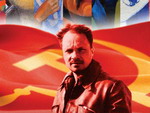Category: Savitsky Art Museum
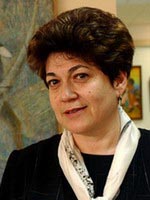 In 2010 the world saw the premiere of the American documentary film ‘Desert of forbidden art’. The Hollywood movie told the story of the museum that got lost in sands of Central Asia. It turned out that for a half century, this museum has been storing the second most important (in the world!) collection of Russian avant-gardists of the beginning of 20th century. We are talking about Savitsky's Museum in Nukus.
In 2010 the world saw the premiere of the American documentary film ‘Desert of forbidden art’. The Hollywood movie told the story of the museum that got lost in sands of Central Asia. It turned out that for a half century, this museum has been storing the second most important (in the world!) collection of Russian avant-gardists of the beginning of 20th century. We are talking about Savitsky's Museum in Nukus.
Nukus is a capital of Republic Karakalpakstan as a part of Uzbekistan with the population not exceeding 1.6 million people. Over 80 % of territory of Karakalpakstan is a hot desert, with the drying up Aral sea in the north of the Republic.
And this back of beyond part of the world is hiding the museum where the Moscow artist and ethnographer Igor Savitsky who arrived in Nukus in the mid-20th century with one of the Soviet expeditions, spent 17 years obsessed with collecting thousands of art works from all corners of Soviet Union.
What he did was incredibly hard at that time. Not only because it took enormous financial resources but also because the creativity of avant-gardists was in persecution, and no museum wanted to include it in the exposition. None, except the Museum in Nukus. Only today we can appreciate priceless Savitsky's work, who managed to keep those unique pieces of art for the world culture despite all difficulties.
After Savitsky's death in 1984, its follower, the daughter of Karakalpak scientist M.Nurmuhamedova and Savitsky’s friend, Marinika Babanazarova, became the director of the Museum. Together with her team of devoted experts and restorers, she has been looking after Savitsky’s unique collection for as long as 28 years. When Marinika Babanazarova came to Tashkent, Advantour.com asked Mrs. Babanazarova give an exclusive interview about the museum, the movie and Savitsky’s creativity.
- Marinika Maratovna, lets start from the very beginning. Please, tell us how Savitsky’s Museum history began?
- Our museum is rather young; it was established in 1966 at the initiative of Moscow artist Igor Savitsky who arrived to Karakalpakistan for the first time in 1950 as a part of the Khorezm archaeological and ethnographic expedition. During expedition he made sketches of fortresses where excavation was conducted, sketched numerous finds. Also he participated in work of ethnographic group that studied Karakalpaks, their life, culture and collected samples of the Karakalpak art for museums of Moscow and Leningrad. Savitsky visited Karakalpakstan many times for seven years and sincerely grown fond of this land. He developed a passé-pied for Karakalpak culture, which he thought was unique and underexplored in Soviet Union.
Eventually, in 1957 Savitsky made final decision to move to Nukus. He left the apartment in Moscow Arbat and started to work in branch of Academy of Sciences in Nukus where he came under the recommendation of my father, his friend. During his work in Academy, he continued to collect Karakalpakian household items, national suits, utensils, he painted local landscapes. It took a while for him to convince the local administration that Nukus needed to open the Museum of Arts as the subjects collected by Savitsky already made up a high-grade exposition. He found support, and the museum was opened, Savitsky was appointed to the post of a director.
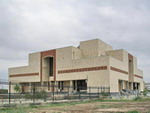 Savitsky began the acquisition since the first days of the museum’s establishment. The basis of the first exposition included folk art works of Karakalpaks that Savitsky managed to collect during his work at the Academy and later. As Savitsky was an artist, he started to collect the works of the 1920th century artists. At the time when the socialist realism was the official art, avant-garde art of Pre-Soviet artists was in oblivion, persecution. No central museum, not only in Uzbekistan, but also in the USSR, would have dared to purchase or to display their paintings, even if they had it in their collections. And certainly remoteness of Nukus from all centres gave more freedom in this context. Savitsky could implement everything he wanted. As one modern Moscow artist Aleksandr Volkov Jr. said, ‘the paradox of the Nukus Museum is that Savitsky used state money to establish the museum at his liking’.
Savitsky began the acquisition since the first days of the museum’s establishment. The basis of the first exposition included folk art works of Karakalpaks that Savitsky managed to collect during his work at the Academy and later. As Savitsky was an artist, he started to collect the works of the 1920th century artists. At the time when the socialist realism was the official art, avant-garde art of Pre-Soviet artists was in oblivion, persecution. No central museum, not only in Uzbekistan, but also in the USSR, would have dared to purchase or to display their paintings, even if they had it in their collections. And certainly remoteness of Nukus from all centres gave more freedom in this context. Savitsky could implement everything he wanted. As one modern Moscow artist Aleksandr Volkov Jr. said, ‘the paradox of the Nukus Museum is that Savitsky used state money to establish the museum at his liking’.
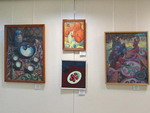 |
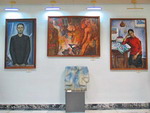 |
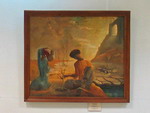 |
- I have been working in the museum since 1983, but I knew Igor Vitalyevich Savitsky since my childhood. He was the friend of our family. My father helped Savitsky with opening of the museum and collecting the museum funds. When our family moved to Tashkent, our house sheltered many pictures collected by Savitsky for his museum. Thus, I knew a lot about Savitsky, his work in the museum, art. After the university graduation, I started to work as the English teacher, but then in 1983 Savitsky invited me to work with him; I accepted the invitation and stayed here. I worked only one year side by side with him. When Igor Vitalyevich died in 1984, I inherited the helm. Thus, I’ve been working as the museum director for 28 years so far.
- Please, tell us, what kind of person was Igor Savitsky?
- Savitsky was, certainly, an unusual person. The museum and collecting artworks were his main passions and lifeworks. He was not interested in anything more. He did not care where to live, what to eat, where to sleep, because he could not be tempted with any creature comforts. We know that Savitsky belonged to a noble family and was brought up in prosperity, if not in luxury, so he had an idea of life quality.
Often, indulging in nostalgia, Igor Vitalevich told us that their family estate in Ukraine often hosted masquerades, official dinners, shared stories about the life of Russian nobility. Savitsky got classical education of noble family; he had a French nanny, so he mastered French, music, painting and theatre. At the same time, he was a very simple and easy-going person.
Certainly, the Soviet power warped his destiny, as well as lives of many representatives of clerisy and aristocracy. Even though it also set a seal on him, it did not corrode his moral values. He was as honest man as ever lived. Unselfish. He was so warm hearted with other people, he helped many, and very often many people took advantage of it, so he often was out of money. He invested everything he had in the museum or helped artists. Certainly, many noticed his obsession with the museum. I remember, when the father joked ‘Igor, please stop talking about the museum’, knowing that Igor Vitalyevich was not interested in anything else, Igor Vitalyevich took it as an awful offence and used to tell me that my father did not understand anything. He was firmly confident that in the future the descendants will highly appreciate the museum and the collection stored in it.
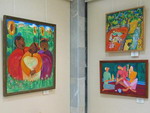 |
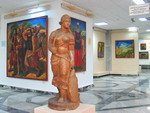 |
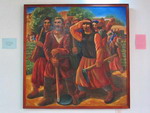 |
Despite the fact that local authorities appreciated it and allocated huge money for the purchase of artworks, their patience was not boundless. After all, as the collector, Savitsky had a huge hunger. Just think of it: he has managed to bring thousands artworks to Nukus, often borrowing them.
Eventually, owners of pictures started to write complaints on him, the Ministry of Finance did not allocate money for purchase of pictures any more not to lay itself open for attack, since the financing did not fit under any estimate. It drove him into despair.
In awful depression he used to say that nobody understood him and nobody saw the value of those artworks. And now we know he was right. Today, avant-garde is appreciated all over the world, and works Savitsky managed to collect in the museum, are estimated in millions dollars at the most prestigious western auctions. This is an enormous financial investment if we consider collection from this point of view, not mentioning its spiritual importance, its absolute universal value.
Savitsky was convinced that the Nukus museum will see times, when it will be visited by people from Paris, ‘the world art camertone’. And these times have come.
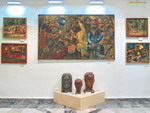 |
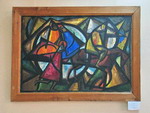 |
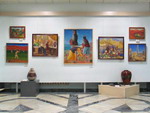 |
- How many exhibits does today's museum collection list?
- Today, the collection lists over 85,500 exhibits. They are not only works of avant-gardists of the beginning of the 20th century, but also an applied art Karakalpaks, archeological items, paintings of the Karakalpak artists. Unfortunately, the display area we have now allows us to expose only 3 % of the whole collection. However, last year the Prime Minister of Uzbekistan S.Mirziyaev signed the resolution to develop the design-budget documentation for the construction of the second and third blocks of the museum’s new building. Now the Tashkent architects headed by the main architect of UzShaharSozlik Tashkent Project Institute S. Sutyagin work on this project, and we hope it will be ready by this autumn, and then the construction will start. The new building will consist of three huge bulks; they will host the second storehouse for exhibits and additional exhibition bulk in addition to the present exposition. Now the museum has only old building and first bulk of the new building built in 2003. As for the storehouse for exhibits, now we temporarily use the building of the former Executive Committee of the City Soviet of People's Deputies adapted for this purpose.
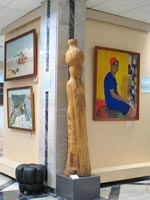 |
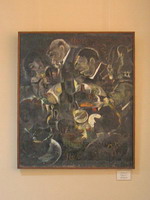 |
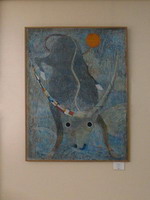 |
- It is hard to keep exhibits in a proper state? After all, you have thousands of them…
- Certainly, it is hard, especially in our sharply continental climate and in the absence of modern system of the climate control in the museum which would help us to keep certain temperature in premises and to preserve pictures from heat and cold. But it is necessary to tell, that our personnel consists of the keepers with an impressive work experience who are devoted to their work, they are skilled restorers. Together we try to do everything possible and impossible to keep the collection in a worthy state.
All exhibits are stored separately, each graphic work, for example, is wrapped up in a special silk paper, we have winter-summer split-systems established almost in each room, we keep the precise tracking of all exhibits. Currently, we are working on the museum’s electronic catalogue. The numerous state commissions and experts from abroad noticed that the museum did a huge work.
- Do you involve foreign experts in restoration works or use your own resources?
- When the Soviet Union dissolved, the best museum restorers remained in Moscow and in Leningrad. Museums of the CIS sent the artworks to Moscow or invited restorers so that they worked for them some time. By that moment our experts had time to be trained at the Moscow School of Restoration and successfully applied received knowledge. We also started cooperating with the European restorers from France, Germany, Bulgaria and other countries, they came to us for some time and helped to restore pictures. Thus, over 56 art works were restored, and the main thing is that our restorers acquired knowledge to work with modern restoration materials. Now they work using knowledge and Russian and European schools. We are so proud of our team.
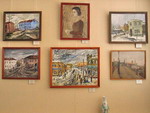 |
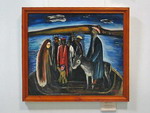 |
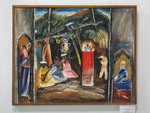 |
Besides, the museum is helped by Club of the Museum’s Friends, embassy of Germany, Switzerland, France, etc. and other states in Uzbekistan, they send us rare restoration materials from Europe. Thus, we manage to keep a life of many artworks, it is literally rescuing them, because we still have thousands of canvases that need restoration. After all, collecting paintings, Savitsky sometimes found them in very bad condition, damaged, stored for a long time in horrible conditions. Now their restoration is one of our main priorities.
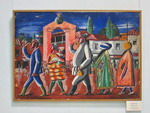 |
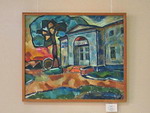 |
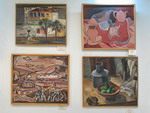 |
- Recently mass-media actively wrote about sensational opening in the Nukus Museum when the X-ray revealed a portrait by an unknown 19th century artist under the paint coat of M.Sokolov's work ‘River mist’. What happened to this picture?
- We know, that Michael Sokolov is a name in art of the 20th century, his artworks can be found in the collections of many known museums of Russia. We have 21 paintings and 288 graphic works done by M.Sokolov. At the present we are unequivocally keeping his picture. So we are not going to take the shave off the surface now, because Michael Sokolov is more precious to us. Besides, a question of such level is not in the competence of our museum. It should be solved by the Ministry of Culture that should establish a special commission of experts as it is an issue of national heritage.
-Please tell us about museum’s short-range plans?
- Our main plan is to wait for the completion of the construction of two new bulks. Moreover, we are getting ready for the new tourist season. We get about 5,000-6,000 foreign tourists annually. It is not a lot of in comparison with other museums of such level. However, we should take into consideration remoteness of the museum, its ‘privacy’ for many years. The museum’s growing popularity and active development of tourism infrastructure will attract more visitors to our museum. Also we plan to add some interesting programs to our excursions, for example demonstration of the Karakalpak traditions, cuisine, throat singing of steppe-dwellers called dhirau, etc.
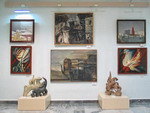 |
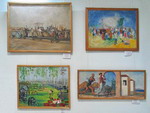 |
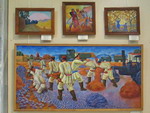 |
- This week you have presented the book about Savitsky. Could you tell us more about it, where it can be purchased?
Yes, at the last display of the film ‘Desert of the forbidden art’ in Tashkent GranArt Art Gallery, I have presented the book ‘Igor Savitsky: a museum founder, a collector, an artist’ over which I worked for many years. There I gleaned Savitsky’s biography, little was known at his lifetime. While alive, Savitsky preferred not to talk a lot about his life and kept in dark his noble origin. His motives were obvious since many family members, friends and acquaintances suffered during the days of so-called ‘red terror’. This is why we need to talk about it now.
Savitsky's name is robustly entering the world history of art, therefore this book is also my duty as his follower and mentee. This is the first book dedicated to Savitsky, not only the museum founder but also as an artist – the whole chapter is dedicated to it. The book is published in London in Russian and English languages with the assistance of Club of the Nukus Museum’s Friends, and the revenue from the book is used for the museum’s needs. We also expect the French edition of the book financed by the French Embassy in Uzbekistan.
- By the way, and did you like a film produced by Hollywood directors about the museum?
- The film ‘Desert of forbidden art’ was produced by the American documentalists, who worked 7 years on it. They used latest technologies, special effects, the film was sounded by famous Oscar winners , which also became a big finding for the film. During the work over the film, the Americans shot an enormous volume of preliminary material – 190 hours of video interview with people who knew Savitsky personally, artists, whose pictures are presented in our museum, world experts of art. Unique documentary materials, archival pictures, the music specially written for a film were used... As a result, the Hollywood producers managed to convey tragic destinies of artists, Igor Savitsky in a highly emotional context. At the same time it is a professional and high quality film. After the film release, we started receiving letters from all parts of the world from those who watched the film. Many make tours to Uzbekistan to see the collection of our museum. Today it is not the only documentary film about our museum but it was the only to get such a wide response.
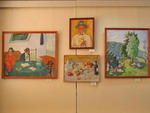 |
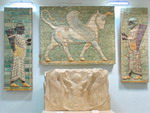 |
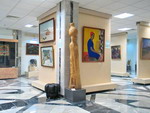 |
One can call this film not just a documental story about Savitsky and his museum, but also a scientific value for those who study Russian art of the 20th century. Today, the University of California in Los Angeles that has the Russian art courses, already acquired this film for its library and uses its preliminary materials for its lectures. By the way, the courses are headed by well-known scientist and fine art expert of Russian avant-guard John Bolt who also speaks about the important of our museum in the film.
After the film was released in 2010, it was displayed at over 70 international film festivals, won some prestigious prizes, and is now nominated for the Emmy American film award. So this film can also be considered a masterpiece of modern art. What is the power of art? The real art makes miracles with people, their perception, and this is what this film does.


